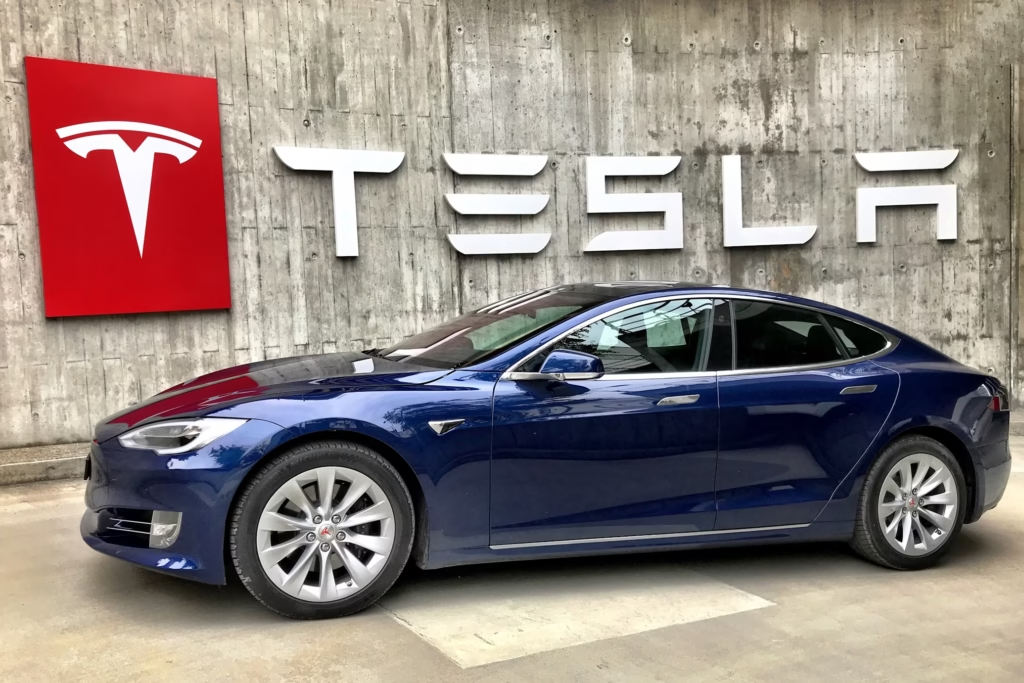
It’s not often that someone shoots themselves in the foot and still wins the race. Yet for years, Elon Musk has managed a similar feat with Tesla — achieving stunning success despite a trail of self-inflicted setbacks. There was the time he championed Tesla’s automated factory, only to later concede that its “crazy, complex network of conveyor belts” had derailed Model 3 production. Or when a single tweet landed him in a fraud lawsuit with the Securities and Exchange Commission. Or when he admitted that Tesla had “dug our own grave” with the long-delayed, overhyped Cybertruck. Despite all this, Tesla remains by far the most valuable car company in the world.
But luck doesn’t last forever. Last night, Tesla released its first-quarter earnings for 2025 — and the results were disastrous: profits plunged by 71 percent compared to the same period last year. During a tense call with investors, Elon Musk sounded frustrated, blaming the downturn on protesters who have targeted Tesla dealerships worldwide over his leadership at DOGE and his vocal support for far-right political figures. “The protests you’re seeing are highly organized and funded,” he claimed, offering no evidence to support the assertion.
Musk then shifted tone. Despite calling his work with DOGE “critical,” he announced that his involvement there would soon shrink dramatically, to just one or two days a week starting next month. He plans to scale back his political engagements and refocus his energy on Tesla — something even many of his staunchest fans have been urging him to do.
Tesla Rvolt
One rough quarter won’t sink Tesla, but it’s increasingly unclear how the company plans to regain its footing. Perhaps its most urgent challenge is that many American electric-vehicle enthusiasts — who often lean politically left — are no longer eager to buy Musk’s cars. The recent wave of “Tesla Takedown” protests has provided frustrated opponents of President Donald Trump’s policies a visible outlet for their anger. Since Musk became one of the Trump campaign’s largest donors, protesters have seen boycotting Tesla as a powerful form of resistance. The fact that Musk immediately referenced these protests during the earnings call shows just how much they’re getting under his skin; Tesla’s U.S. sales have slumped sharply this year, even as overall EV sales continue to climb.
Across Europe, the backlash has a different, but equally damaging flavor. While many Europeans may feel disconnected from the DOGE controversy, Musk’s vocal support for far-right figures — especially Germany’s Alternative for Germany (AfD) party — has not gone unnoticed. Tesla’s sales on the continent have been plummeting, with declines reaching double digits in several key markets.
Meanwhile, customers looking for electric vehicles are increasingly turning to other automakers. Although Tesla helped pioneer the modern EV market, competitors have closed the gap — offering models with longer range, more features, and lower prices. A new, more affordable Tesla model has been teased for some time, but buzz around it remains muted, partly because Musk appears more focused on autonomous vehicle projects. A “robotaxi” service is reportedly slated to launch in June in Austin. However, Tesla’s ambitious self-driving plans ultimately depend on strong current car sales to sustain the company financially — and right now, that’s exactly where Tesla is struggling most.

The great Tesla sell-off
Then there’s the larger and growing challenge of China. Tesla helped pave the way for modern electric vehicles there, but now Musk faces fierce competition from a flood of Tesla-inspired companies that have taken his blueprint and pushed it even further. While Teslas still sell decently in China, new local EV brands offer better features, faster charging, and cutting-edge approaches to automation.
At most companies, the CEO would have long since been shown the exit. But Tesla’s stock value is deeply tied to Musk’s reputation as a once-revered Silicon Valley innovator. Even if Musk were to step down, it’s unclear whether the brand could easily recover, Robby DeGraff, an analyst at AutoPacific, told me. “I honestly doubt that just removing him would fix everything,” DeGraff said. “While Tesla still has the potential to realign itself with exciting, high-quality, and innovative products, there’s an enormous amount of damage behind the scenes that would first need repairing.
once the bold disruptor of the auto industry, is beginning to resemble an aging “legacy” automaker — scrambling to keep up while newer players surge ahead. And unlike Tesla, these newcomers aren’t burdened by a leader whose polarizing public persona has made the brand toxic enough to attract protestors rather than customers. If Tesla’s future depends on winning back left-leaning EV buyers — after Musk’s public support for Trump, his endorsement of Germany’s AfD party, and his role in mass government layoffs — then he may soon find himself wishing his biggest headache was just delivering a steel-plated truck on time.




